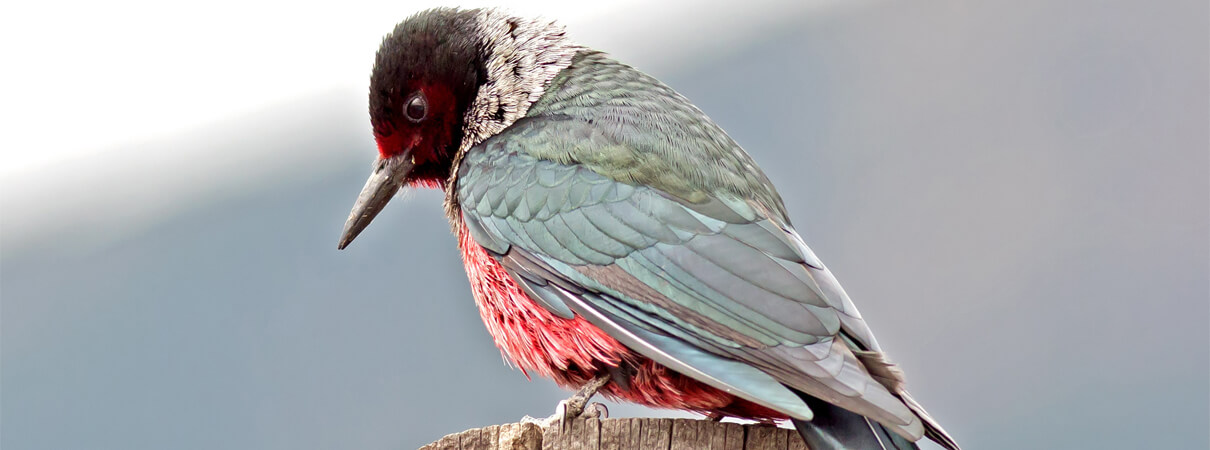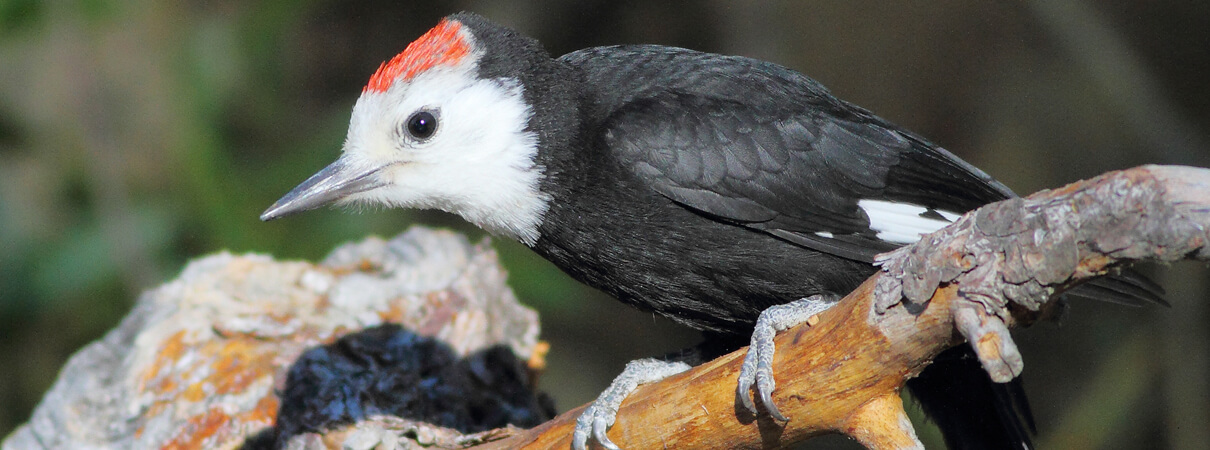New Protection for Lewis's Woodpecker Habitat in Oregon
With help from American Bird Conservancy (ABC), Columbia Land Trust has secured the final 115 acres of a key 418-acre wildlife corridor on Mill Creek Ridge in north-central Oregon. This acquisition protects a stronghold population of Lewis's Woodpecker, one of the highest-priority birds in North America and a national Watch List species.
Lewis's Woodpecker conservation is at the top of the list for ABC's Western Program, said Bob Altman, Pacific Northwest Conservation Officer. “Protecting this property and now the entire ridge is an important step in this birds' future.”

Lewis's Woodpecker is a stunning bird. Photo by Ian Maton, Shutterstock
The Lewis's Woodpecker is stunning and unmistakable, with its iridescent greenish-black back, head, and tail; silvery gray collar; dark-red face; and pinkish belly. The bird relies on the oak and ponderosa pine savannah found in the Mill Creek Ridge area. But habitat across its range has been greatly reduced, and some local populations have disappeared entirely.
Historically, low-intensity natural wildfires maintained the open pine and oak forest conditions that the woodpecker uses for habitat. However, in recent decades the practice of suppressing wildfires has led to unnatural increases in the density of these forests, rendering them unsuitable for Lewis's Woodpecker.
Further, there has been extensive localized loss of Lewis's Woodpecker habitat to development. This is especially true where low-elevation pine and oak forest occur near and within rural and residential development. The latter is the case at Mill Creek Ridge, a popular area for second homes.
Habitat with a View
Mill Creek Ridge, a prominent 8-mile-long basalt abutment near The Dalles, Ore., shelters prime Lewis's Woodpecker habitat. It provides a critical undeveloped wildlife corridor between national forest lands to the south and Columbia River Gorge National Scenic Area to the north.
The landscape is a mosaic of high-quality oak, pine-oak, and meadow habitat. In the spring, brilliant red paintbrush, purple lupine, and gold balsamroot wildflowers blanket the hillsides.

Wildflowers like balsamroot and lupine are abundant on Mill Creek Ridge. Photo by Doug Gorsline
The ridge also offers striking views of the snow-capped peaks of Mount Adams and Mount Hood. Below it lies the majestic Columbia River, navigated by Meriwether Lewis — the namesake for Lewis's Woodpecker — and the Corps of Discovery more than 150 years ago on their journey to find the Northwest Passage to the Pacific Ocean.
Hundreds of Acres for Lewis's Woodpecker
After learning that Mill Creek Ridge was zoned for high-end development because of its dramatic views, Columbia Land Trust conserved 303 acres of the ridge across multiple properties between 2006 and 2015. But one large intervening parcel still divided the protected areas. In late February, the Land Trust acquired that key 115-acre parcel, completing the long-term goal of connecting the ridgeline and slopes on both sides.

The view from Mill Creek Ridge. Photo by Columbia Land Trust
“Mill Creek Ridge in springtime is home to the flitting of Western Bluebirds, the watery call of the meadowlark, and the brilliance of a Lewis's Woodpecker perched atop an old oak,” said Columbia Land Trust Executive Director Glenn Lamb. “American Bird Conservancy continues to support our protection efforts, and has been a strong advocate for bird conservation throughout the region.”
Working with Landowners
For the last 10 years, ABC has made significant investments in the conservation of Lewis's Woodpecker and other cavity-nesting birds on private ponderosa pine lands in the Pacific Northwest. In addition to Lewis's Woodpecker, this work benefits Flammulated Owl, White-headed Woodpecker, and Williamson's Sapsucker.
Grants from several foundations and agencies have resulted in a variety of habitat management and restoration actions on 35 private properties with more than 14,000 acres of ponderosa pine habitat. These restoration efforts include thinning on approximately 400 acres, the creation of 118 snags, and the placement of 51 nest boxes for Lewis's Woodpecker.

White-headed Woodpecker is another striking species that benefits from the land acquisition. Photo by Greg Homel
“Habitat restoration for Lewis's Woodpecker is highly compatible with private landowners' desires to minimize the risk of fire and provide some economic value for their forests,” Altman said. “Our main goal is to make sure there are enough large, dead trees the bird needs for nesting, and landowners play an important role in achieving that.”
The acquisition was made possible by ABC funding through the Neotropical Migratory Bird Conservation Act and by support from the Oregon Watershed Enhancement Board, as well as a generous donation from local landowners.


















































